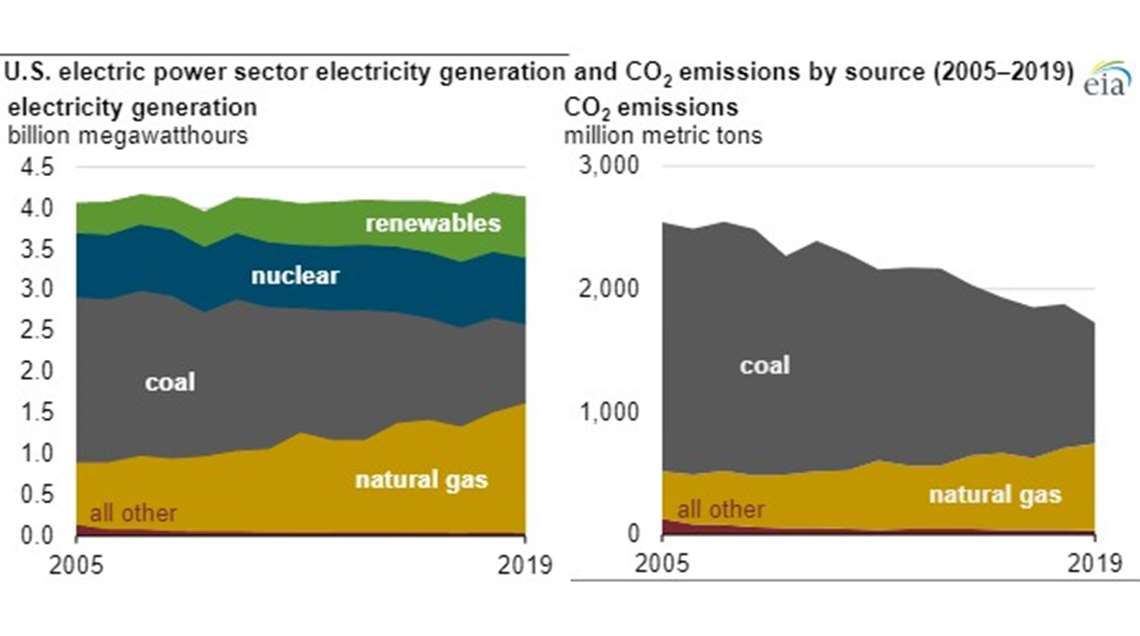EIA: Move to natural gas, renewables leads to lower CO2
08 June 2021
U.S. electric power sector saw shift since 2005
The shift from coal to natural gas and renewables over the past 15 years has resulted in lower CO2 emissions from electricity generation in the U.S., according to the U.S. Energy Information Adminstration (IEA).
In 2019, the U.S. electric power sector produced 1724 million metric tons (MMmt) of CO2, 32% less than the 2544 MMmt produced in 2005.
Lower CO2 emissions have largely been a result of a shift from coal to natural gas in the electricity generation mix. In 2005, coal made up 50% of U.S. electricity generation; that share declined to 23% in 2019. Conversely, natural gas increased from 19% of total generation in 2005 to 38% in 2019.

For the next few years, this trend may be changing. The IEA’s Short-Term Energy Outlook forecasts that higher natural gas prices will lead to less natural gas-fired generation and more coal-fired generation in 2021. However, in 2022, the IEA expects both coal and natural gas to lose a portion of their shares to renewables.
When generating electricity, coal emits significantly more CO2 than natural gas. In 2019, coal-fired generation produced 2257 pounds of CO2 per megawatthour (MWh) of electricity. Natural gas-fired generation produced less than half that amount at 976 pounds of CO2/MWh.
“CO2 emissions associated with generating electricity from coal and natural gas differ because of differences in the fuels themselves—coal has more carbon content per unit of energy,” the IEA said. “In addition, coal-fired plants and natural gas-fired plants differ in how efficiently they convert their respective fuels to electricity. The amount of CO2 produced when a fuel is burned depends on a fuel’s carbon content. Coal produces more CO2 per unit of energy than natural gas does when burned. Coal consumption for electricity generation produces 209 pounds of CO2 per million British thermal units (MMBtu), compared with 117 pounds of CO2/MMBtu for natural gas.”
Natural gas-fired generators, especially those that operate in a combined-cycle configuration, are also more efficient than coal-fired generators. On average, natural gas-fired generators produce electricity with significantly less energy input than coal, also helping to lower CO2 emissions. A lower heat rate indicates a more efficient plant. In 2019, the conversion efficiency for natural gas-fired generation was 7731 British thermal units per kilowatthour (Btu/kWh) and 10 551 Btu/kWh for coal-fired generation.
STAY CONNECTED




Receive the information you need when you need it through our world-leading magazines, newsletters and daily briefings.
POWER SOURCING GUIDE
The trusted reference and buyer’s guide for 83 years
The original “desktop search engine,” guiding nearly 10,000 users in more than 90 countries it is the primary reference for specifications and details on all the components that go into engine systems.
Visit Now
CONNECT WITH THE TEAM










